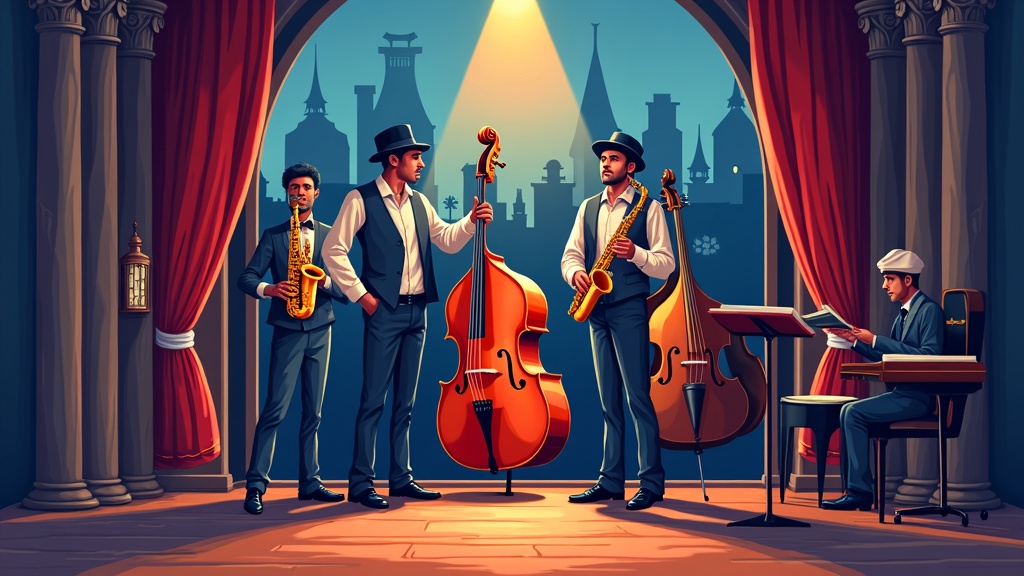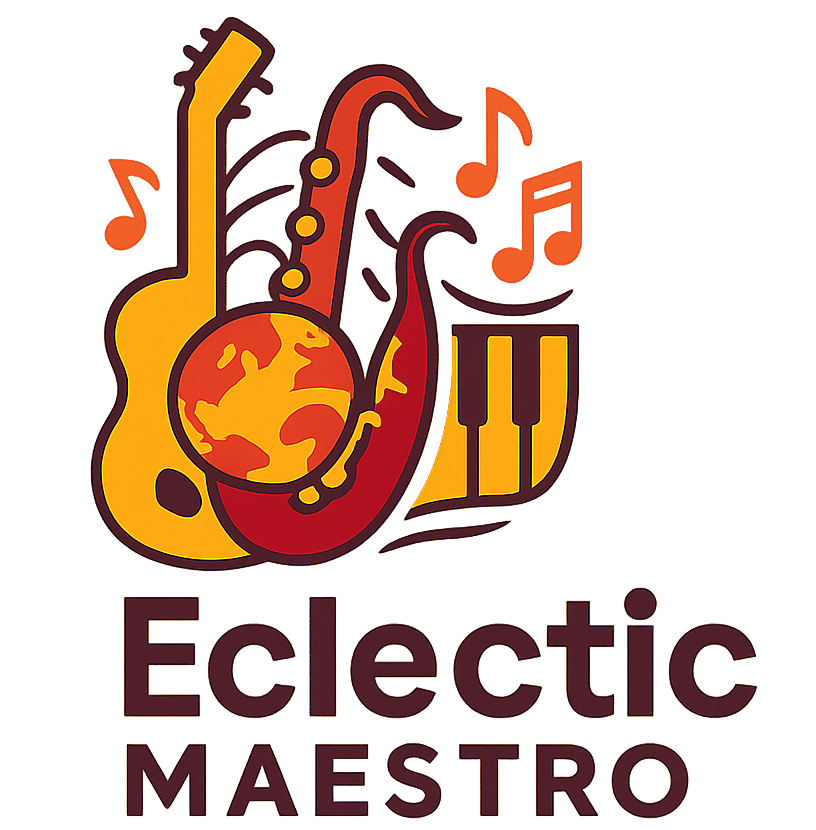Jazz is one of those genres that grabs your attention, whether it’s the bounce of a New Orleans brass band or the off-the-wall experimentation you hear in modern jazz clubs. It’s got a wild history packed with stories, cultural switch ups, and music that keeps on moving forward. Here, I’m sharing an all-in-one look at where jazz started and how it turned into what we hear today, all in plain language that makes sense even if you’re just getting into the basics.

The Birth of Jazz in New Orleans
Early jazz started bubbling up in New Orleans by the late 1800s and early 1900s. This city had musicians from all over—African, Caribbean, European, and Creole backgrounds—playing together and swapping musical ideas. New Orleans was loaded with parades and parties, and brass bands were at the heart of almost every celebration.
Jazz grew out of countless influences, such as blues, ragtime, marching band music, gospel, and even opera. Musicians mixed in call and response vocals and rhythms you’d hear in African American churches. Brass instruments like trumpets, trombones, and clarinets remained a mainstay, and groups performed everywhere from street corners to dance halls.
If you want a taste of these beginnings, it’s worth checking out musicians like Louis Armstrong or Original Dixieland Jazz Band. Their early recordings catch the energy and spirit that made jazz addictive right from the start.
Jazz Spreads: The Great Migration and 1920s Jazz Age
During the early 1900s, the Great Migration saw thousands of Black Americans leaving the South for cities up North, like Chicago and New York. When jazz musicians made this ride, their sound traveled too—picking up new flavors as they went.
Chicago, in particular, became a hot spot for jazz. Clubs like the Green Mill and Sunset Café buzzed with hot jazz, and names like King Oliver, Jelly Roll Morton, and Bessie Smith became popular. The music was lively and perfect for the wild parties and dance marathons of the Roaring Twenties—a time also known as the Jazz Age.
Jazz started branching out, getting faster and more polished. Bands added saxophones and even string basses. If you picture flappers dancing the Charleston or see folks grooving to “Stomp,” you’re right in the heart of this era.
The Swing Era and Big Band Sound
By the 1930s and into the 1940s, jazz stepped up into its swing phase. Big bands led by folks like Duke Ellington, Count Basie, and Benny Goodman filled ballrooms with huge sound. These bands brought together rhythm sections (drums, bass, piano, guitar), horn sections (trumpets, trombones, saxophones), and singers all combining their talents.
Swing music is plain made for dancing. It’s got walking bass lines, powerful brass, and slick arrangements. A lot of the best-loved jazz standards were written or made big in this time—songs like “In the Mood” or “Take the ‘A’ Train.”
Radio and records helped jazz spread everywhere, so people could hear these tunes in homes, bars, and dance halls all across the US. Jazz moved into the mainstream, and big bands even played shows in Europe and other parts of the world, sticking it out through tough times like the Great Depression and World War II.
Bebop: The Rise of Fast, Complex Jazz in the 1940s
Years of pop success led some musicians to mix things up and skip catering to the mainstream dance crowd. In the 1940s, players like Charlie Parker and Dizzy Gillespie cooked up bebop, a brainy, high-speed style packed with improvisation and tricky harmonies.
Bebop dropped the big bands for small combos: think sax, trumpet, piano, bass, and drums. Tunes got much faster, solos got longer, and players really had to listen and react. Jazz became more about listening than dancing, opening up new ways to show off musicianship.
Despite sounding tough at first, bebop’s hit was massive. If you hear jazz with flashy solos and tangled melodies, the musicians probably cut their teeth on bebop.
The Glow-Up of Modern Jazz Styles
From bebop, jazz began heading out in all sorts of directions, making it one of the most flexible genres ever. Some slowed things down, some brought in new instruments, and some mashed jazz up with pop and funk. Here are a few modern forms you should get to know:
- Cool Jazz: Folks like Miles Davis set the pace for a smoother, more laidback sound in the late 1940s and ‘50s. It’s subtle, with less frantic energy than bebop.
- Hard Bop: This style brought blues and gospel back to jazz, serving up a rawer, punchier sound.
- Modal Jazz: Songs like “So What” (Miles Davis again!) used scales (or “modes”) in place of tricky chord changes. It opened the door for longer solos and new moods.
- Free Jazz: In the 1960s, artists like Ornette Coleman shed the old rules, opting for wild improvisation. This style can get pretty out-there but gives musicians total freedom.
- Fusion: By the 1970s, jazz musicians were experimenting with rock, funk, and electronic vibes, adding electric guitars, synthesizers, and wild rhythms. Names like Herbie Hancock and Weather Report show just how far jazz can stretch and blend into something new.
Core Elements That Make Jazz Unique
Jazz is bigger than just a single style—it’s built on a few core pillars that keep all these forms connected even as the music switches up:
- Improvisation: Most jazz lets players make up solos on the spot, so every performance is fresh and one-of-a-kind.
- Swing and Groove: Jazz rhythms often have a bouncy, shuffling feel that almost anyone can tap along with.
- Call and Response: Bands build energy by tossing melodies or rhythms back and forth, echoing each other for extra flair.
- Blues Influence: Nearly every jazz piece borrows something from the bittersweet melodies and storytelling roots of the blues.
Challenges and Turning Points in Jazz History
Jazz musicians have tackled plenty of hurdles. Segregation and racism were all too common in the US—many players, especially Black musicians, were blocked from gigs, hotels, and basic respect even as they packed out shows. Organizations like the NAACP stood behind better rights for artists, and over time, jazz clubs finally opened up to more integrated audiences and players.
Prohibition in the 1920s shut down countless bars, yet jazz lived on in hidden spots known as speakeasies. During World War II, material shortages meant fewer records got pressed, but jazz artists still toured, even playing for soldiers abroad.
These days, jazz faces competition from a world of music styles. But jazz festivals, school programs, and fresh recordings keep this music alive for old fans and brand-new listeners alike.
Jazz Around the World and Its Role Today
Jazz was born in New Orleans, but its reach now covers the globe. Cities like Paris, Tokyo, and Cape Town all boast lively jazz scenes with homegrown twists. Musicians all over set their own cultural spin on jazz’s sound and rhythms, proving that jazz never truly stands still.
Modern jazz is all over—you’ll stumble upon elements in hip-hop, pop, and blockbuster movie scores. Streaming and social media get the word out to brand-new listeners. Jazz education in schools and colleges is thriving, inspiring young players to keep the story going.
Frequently Asked Questions About Jazz Glow-Up
Question: Who’s considered the most influential jazz musician?
Answer: A lot of folks point to Louis Armstrong and his powerful sound and sharp solos, but Duke Ellington, Charlie Parker, and Miles Davis are all game-changers in their own ways.
Question: Is jazz still relevant for young musicians?
Answer: Absolutely. Jazz is a foundation for learning about rhythm, melody, and harmony. Loads of modern genres, from R&B to indie pop, track down ideas from jazz and flip them into something new.
Question: How can someone get started listening to jazz?
Answer: Try jumping into a playlist that starts with classics from New Orleans and rolls through to today’s scene. Albums like “Kind of Blue” (Miles Davis), “A Love Supreme” (John Coltrane), and some early Louis Armstrong recordings offer a smooth entry for beginners.
Bringing Jazz History Into Your Everyday
You don’t need a music degree to connect with jazz. Open ears and a little curiosity go a long way. Listening to sounds from different eras lets you spot the stories behind the rhythms and improvisations you hear. For anyone picking up an instrument or simply building up a love for music, the ever-unfolding glow-up of jazz is an inspiring ride. Jazz keeps proving that creativity always finds a way, no matter what obstacles pop up along the road.
